The secret to profitable milk production in Ireland is to produce as much milk as possible from homegrown forages.
In the case of spring milk production, the primary forage is grazed grass whereas in winter milk production, the primary forage is silage and wholecrop.
Variables
There are more variables at play when it comes to feeding cows in a shed compared to grazing but the ultimate goal is the same and that is to maximise dry matter intakes.
The following points will help to maximise intake potential in winter milk systems.
If there is competition for access to feed, then the dominant cows will win and the weaker, less dominant cows will be left to wait their turn. This has a number of effects.
Firstly, the weaker cows will be hungry for longer and if cows aren’t eating enough then they can’t express their potential in terms of milk yield.
Secondly, their body condition score will also be lower if intakes are lower and this could affect fertility performance.

Heifers should be trained to self-locking barriers before entering the milking herd.
Thirdly, if cows are waiting for “permission” to access the feed face then they will be on their feet for longer – standing on concrete waiting to get an opportunity to eat. This has negative consequences for hoof health and lameness.
Finally, and this can often be overlooked, by the time the less dominant cows get to eat at the feed face a lot of the higher-quality feeds could be already eaten.
This sorting of feed at the feed face, even where cows are fed a total mixed ration (TMR) means that the less dominant cows not only get to eat less, but they get to eat less of an inferior diet – a double whammy of malnutrition.
Meanwhile, the dominant cows in the herd are eating too good a diet which is totally inefficient but can also lead to health problems if they don’t get enough fibre into their diet, which is what they typically reject when they get to sort feed.
Milking cows require between 70cm and 85cm of feed space per cow during lactation.
According to The National Animal Disease Information Service (NADIS) in the UK, intakes are optimised when cows are fed at “grazing height”, meaning the height of the feed passage should be 10cm to 15cm above the height of the cow standing area.
It has also been found that cows prefer to eat off a smooth surface. I have seen farmers on the continent and elsewhere tile or put plastic lining or resin under where the feed is placed.
I’ve heard it said that feed barriers can often be a barrier to feed. This is especially the case where they are at an inappropriate height or shape, such as neck rail too low or the vertical dividing bars are too close together making it uncomfortable for cows to feed at them. The result of this is that cows can get lumps on their neck and, ultimately, they eat less.
Many winter milk farms have introduced self-locking barriers, which are very useful for handling cows in the shed in a quick and stress free manner.
However, first-calving heifers can often be unsure or nervous of these barriers if they haven’t been already trained to them.
This can lead to lower intakes in the first few weeks after calving. To overcome this, train animals entering the herd to self-locking barriers a few weeks out from calving.
Feed type
High-quality forages that are high in dry matter digestibility, dry matter, energy and protein are best for lactating cows. Feeding cows is all about satisfying the rumen.
The rumen microbes, which break down the feed, want a consistent supply of high-quality feeds whether that’s grazed grass or high-quality silages.
The capacity of the rumen is more or less fixed and cows can’t really eat more feed until the existing feed in the rumen is processed. This is why the digestibility of feed is so important.
Feeding very high dry matter silage, more than 40% dry matter can actually reduce dry matter intake as the cows need to produce extra saliva to moisten the feed and chew it for longer before it enters the rumen.
Consistency
Cows are particularly sensitive to variations in the diet and much prefer a consistent diet.
Avoid feeding the top of the silage pit to milking cows and make sure they don’t get fed bad or mouldy silage. In any event, this silage will probably be rejected by them.
Best practice
In high-yielding systems, best practice is to feed about 5% more feed than is required on a daily basis. This ensures that there is always feed at the feed face and that cows are never out of feed.
However, this 5% of extra feed should be removed before extra feed is added.
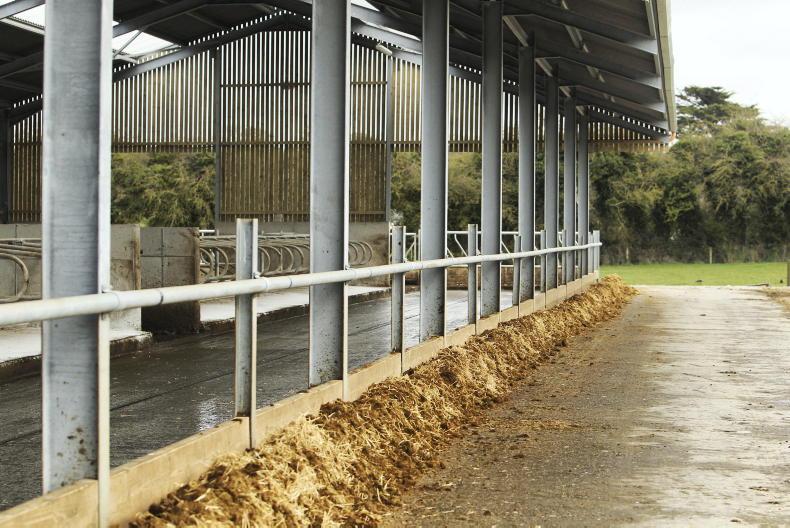
Milking cows should be fed 5% more than their demand and what's left should be pushed away daily and fed to other stock.
This can be fed to dry cows or other stock on the farm.
The importance of lighting is often overlooked on Irish farms. This is not to say that farmers don’t have lights in their sheds, more so that the light is mismanaged.
Ideally, cows should be in a bright environment for 16 hours and be in a dark environment for eight hours out of every 24 hours.
Keeping cows in a bright environment for 24 hours per day has been found to reduce performance. Similarly, not giving cows enough light in the 24-hour period has been found to reduce performance and have a negative impact on hormonal balance.
On a recent trip to Britain, the farms visited were all using timers and sensors to control the lights in the cow shed.
The quality of light is also important with a minimum of 160 LUX required during the bright period. Many farms have moved to using LED lighting. Although more expensive to install, it has much lower running costs and provides high-quality light. Some of these LED lights can mimic daylight in terms of brightness.
One farmer had 6,000 Kelvin LED lights installed in the milking parlour and cubicle shed.
Daylight
When the lights are on, it’s like being in daylight with nice bright light and no shadows.
This not only provides a nice environment for the cows, but it also provides a nice environment for the people working on the farm which is equally important as many people find the winter months difficult and it can affect their mood. Lights should be on during the day and off at night as daylight quality in winter is generally poor.
The importance of high-quality water in the diet of dairy cows cannot be overstated as it has a huge impact on total dry matter intake.
In a grazing situation, water intake is less obvious but no less important because cows are consuming a lower dry matter feed (fresh grass).
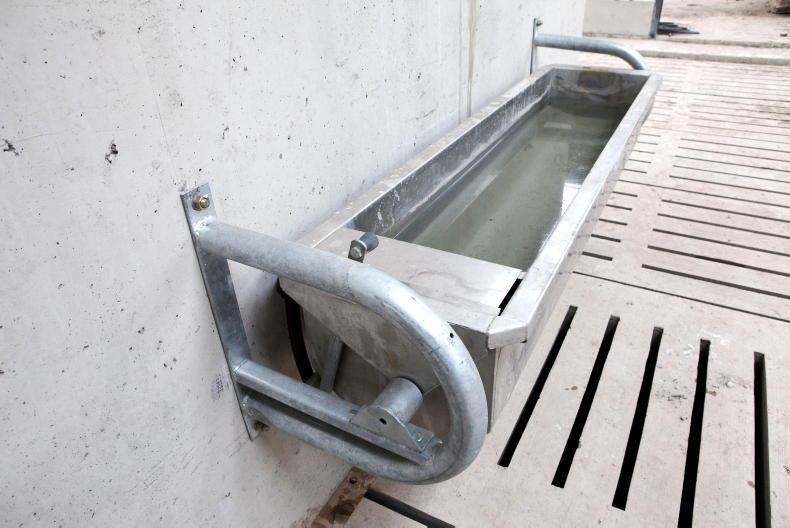
Tip-over water trough.
Because the dry matter of silage and meal is much higher than grazed grass, housed cows generally drink more water.
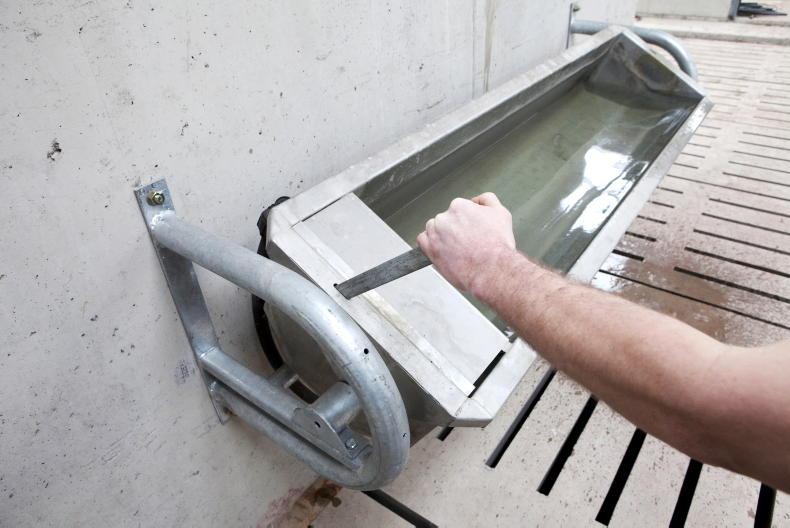
Tip-over water troughs are easy to use.
The quality of water being fed to cows should be human food grade. According to NADIS, cows have a preference for lukewarm water over very cold water so keep that in mind if water is piped directly from a well.
In too many cases, the quality of the water coming to the trough is excellent, but the quality of the water in the trough is poor because the trough is rarely, if ever, cleaned.
In very high-yielding herds, water troughs are emptied and cleaned at every milking which can be up to three times per day.
Tip-over troughs or troughs with a large drainage valve will make the job quick and easy. It is recommended that 10% of cows in the group should be able to drink water at the one time and housed cows need 60cm of trough space.
Therefore, there should be 1.8m of water trough space in the shed for every 30 cows. Long, narrow and shallow troughs are preferred over short and deep troughs.
The objective of feeding cows this winter is to maximise dry matter intakes. Dry matter intake is influenced by feed quality but also the environment, such as access to feed space, water, light, etc. Milking cows need between 70cm and 85cm of feed space per cow.High-quality lights should be on for 16 hours each day and off for eight hours each night.
The secret to profitable milk production in Ireland is to produce as much milk as possible from homegrown forages.
In the case of spring milk production, the primary forage is grazed grass whereas in winter milk production, the primary forage is silage and wholecrop.
Variables
There are more variables at play when it comes to feeding cows in a shed compared to grazing but the ultimate goal is the same and that is to maximise dry matter intakes.
The following points will help to maximise intake potential in winter milk systems.
If there is competition for access to feed, then the dominant cows will win and the weaker, less dominant cows will be left to wait their turn. This has a number of effects.
Firstly, the weaker cows will be hungry for longer and if cows aren’t eating enough then they can’t express their potential in terms of milk yield.
Secondly, their body condition score will also be lower if intakes are lower and this could affect fertility performance.

Heifers should be trained to self-locking barriers before entering the milking herd.
Thirdly, if cows are waiting for “permission” to access the feed face then they will be on their feet for longer – standing on concrete waiting to get an opportunity to eat. This has negative consequences for hoof health and lameness.
Finally, and this can often be overlooked, by the time the less dominant cows get to eat at the feed face a lot of the higher-quality feeds could be already eaten.
This sorting of feed at the feed face, even where cows are fed a total mixed ration (TMR) means that the less dominant cows not only get to eat less, but they get to eat less of an inferior diet – a double whammy of malnutrition.
Meanwhile, the dominant cows in the herd are eating too good a diet which is totally inefficient but can also lead to health problems if they don’t get enough fibre into their diet, which is what they typically reject when they get to sort feed.
Milking cows require between 70cm and 85cm of feed space per cow during lactation.
According to The National Animal Disease Information Service (NADIS) in the UK, intakes are optimised when cows are fed at “grazing height”, meaning the height of the feed passage should be 10cm to 15cm above the height of the cow standing area.
It has also been found that cows prefer to eat off a smooth surface. I have seen farmers on the continent and elsewhere tile or put plastic lining or resin under where the feed is placed.
I’ve heard it said that feed barriers can often be a barrier to feed. This is especially the case where they are at an inappropriate height or shape, such as neck rail too low or the vertical dividing bars are too close together making it uncomfortable for cows to feed at them. The result of this is that cows can get lumps on their neck and, ultimately, they eat less.
Many winter milk farms have introduced self-locking barriers, which are very useful for handling cows in the shed in a quick and stress free manner.
However, first-calving heifers can often be unsure or nervous of these barriers if they haven’t been already trained to them.
This can lead to lower intakes in the first few weeks after calving. To overcome this, train animals entering the herd to self-locking barriers a few weeks out from calving.
Feed type
High-quality forages that are high in dry matter digestibility, dry matter, energy and protein are best for lactating cows. Feeding cows is all about satisfying the rumen.
The rumen microbes, which break down the feed, want a consistent supply of high-quality feeds whether that’s grazed grass or high-quality silages.
The capacity of the rumen is more or less fixed and cows can’t really eat more feed until the existing feed in the rumen is processed. This is why the digestibility of feed is so important.
Feeding very high dry matter silage, more than 40% dry matter can actually reduce dry matter intake as the cows need to produce extra saliva to moisten the feed and chew it for longer before it enters the rumen.
Consistency
Cows are particularly sensitive to variations in the diet and much prefer a consistent diet.
Avoid feeding the top of the silage pit to milking cows and make sure they don’t get fed bad or mouldy silage. In any event, this silage will probably be rejected by them.
Best practice
In high-yielding systems, best practice is to feed about 5% more feed than is required on a daily basis. This ensures that there is always feed at the feed face and that cows are never out of feed.
However, this 5% of extra feed should be removed before extra feed is added.

Milking cows should be fed 5% more than their demand and what's left should be pushed away daily and fed to other stock.
This can be fed to dry cows or other stock on the farm.
The importance of lighting is often overlooked on Irish farms. This is not to say that farmers don’t have lights in their sheds, more so that the light is mismanaged.
Ideally, cows should be in a bright environment for 16 hours and be in a dark environment for eight hours out of every 24 hours.
Keeping cows in a bright environment for 24 hours per day has been found to reduce performance. Similarly, not giving cows enough light in the 24-hour period has been found to reduce performance and have a negative impact on hormonal balance.
On a recent trip to Britain, the farms visited were all using timers and sensors to control the lights in the cow shed.
The quality of light is also important with a minimum of 160 LUX required during the bright period. Many farms have moved to using LED lighting. Although more expensive to install, it has much lower running costs and provides high-quality light. Some of these LED lights can mimic daylight in terms of brightness.
One farmer had 6,000 Kelvin LED lights installed in the milking parlour and cubicle shed.
Daylight
When the lights are on, it’s like being in daylight with nice bright light and no shadows.
This not only provides a nice environment for the cows, but it also provides a nice environment for the people working on the farm which is equally important as many people find the winter months difficult and it can affect their mood. Lights should be on during the day and off at night as daylight quality in winter is generally poor.
The importance of high-quality water in the diet of dairy cows cannot be overstated as it has a huge impact on total dry matter intake.
In a grazing situation, water intake is less obvious but no less important because cows are consuming a lower dry matter feed (fresh grass).

Tip-over water trough.
Because the dry matter of silage and meal is much higher than grazed grass, housed cows generally drink more water.

Tip-over water troughs are easy to use.
The quality of water being fed to cows should be human food grade. According to NADIS, cows have a preference for lukewarm water over very cold water so keep that in mind if water is piped directly from a well.
In too many cases, the quality of the water coming to the trough is excellent, but the quality of the water in the trough is poor because the trough is rarely, if ever, cleaned.
In very high-yielding herds, water troughs are emptied and cleaned at every milking which can be up to three times per day.
Tip-over troughs or troughs with a large drainage valve will make the job quick and easy. It is recommended that 10% of cows in the group should be able to drink water at the one time and housed cows need 60cm of trough space.
Therefore, there should be 1.8m of water trough space in the shed for every 30 cows. Long, narrow and shallow troughs are preferred over short and deep troughs.
The objective of feeding cows this winter is to maximise dry matter intakes. Dry matter intake is influenced by feed quality but also the environment, such as access to feed space, water, light, etc. Milking cows need between 70cm and 85cm of feed space per cow.High-quality lights should be on for 16 hours each day and off for eight hours each night. 







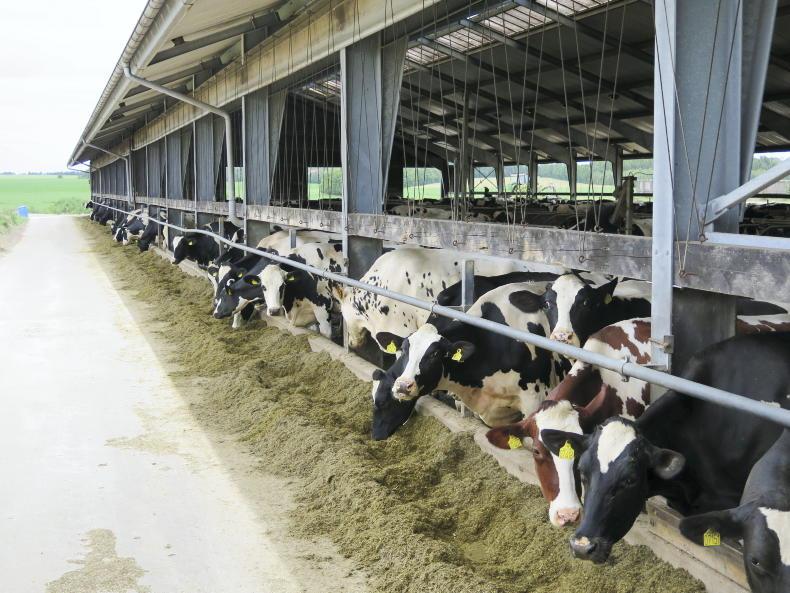
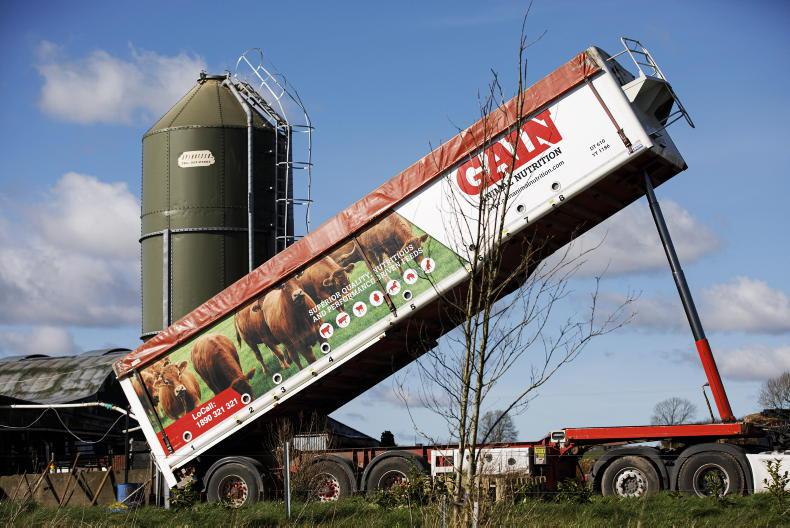

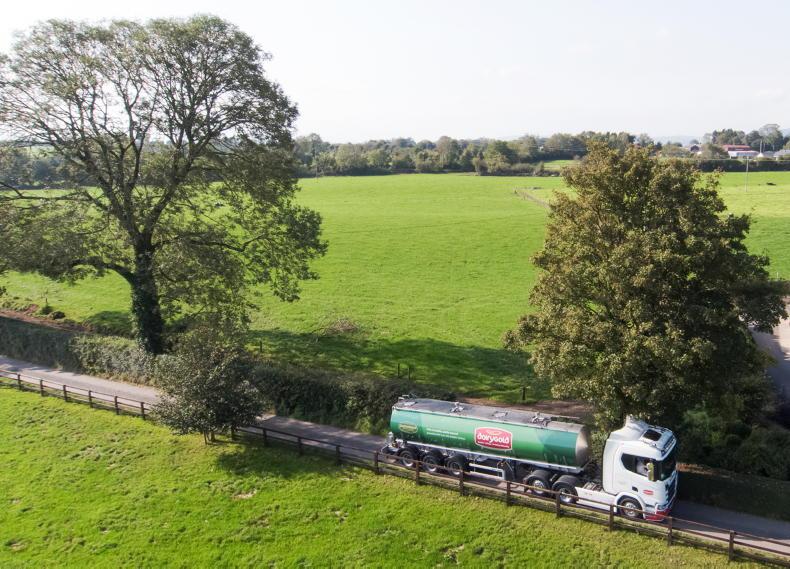
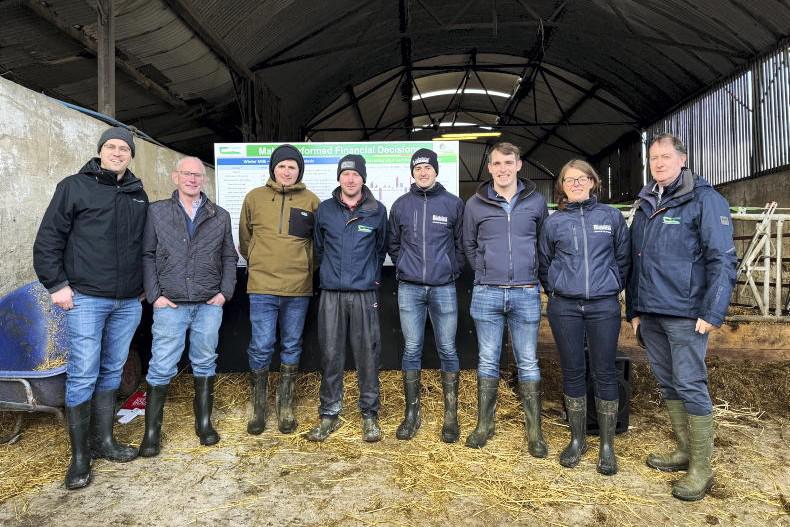
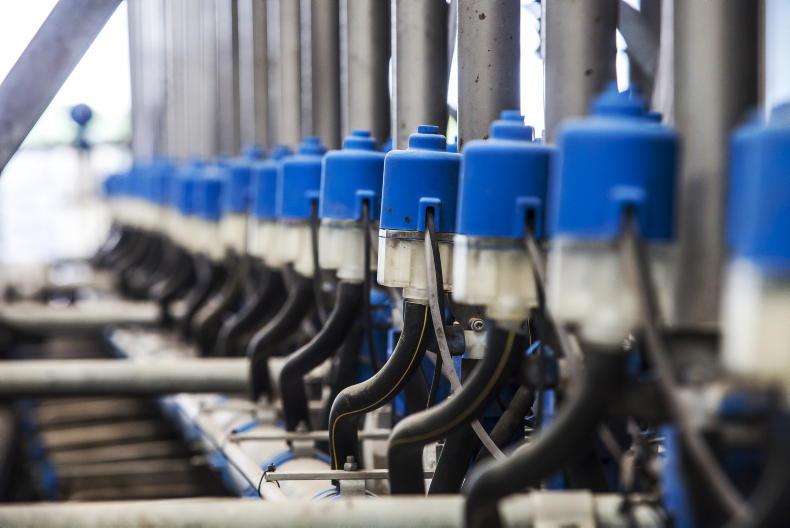
SHARING OPTIONS